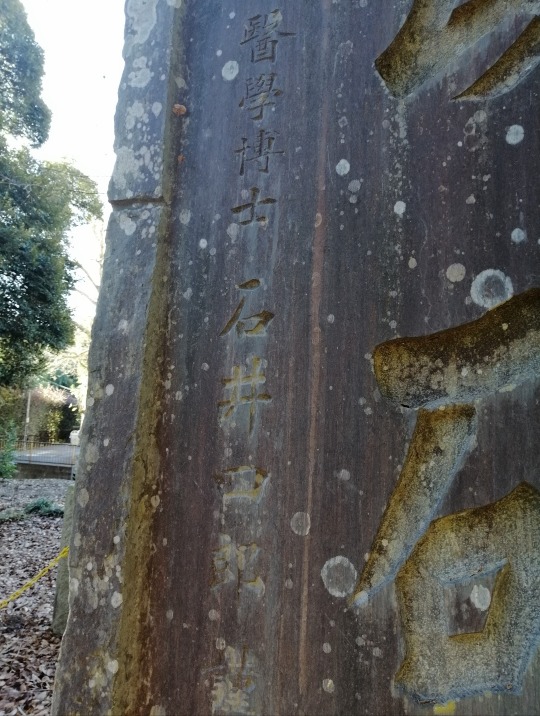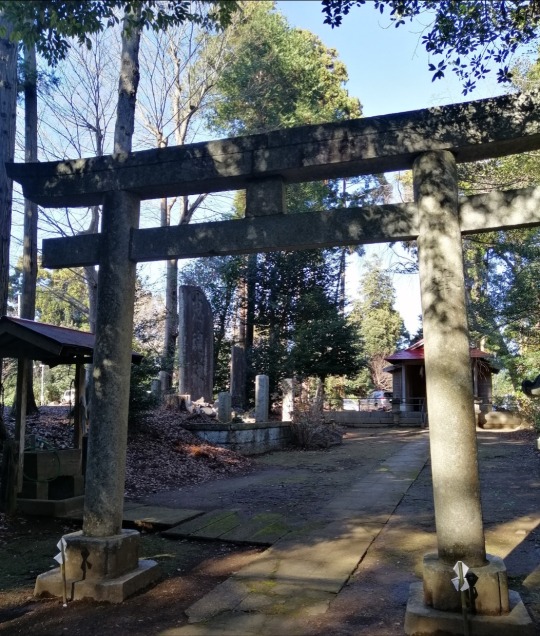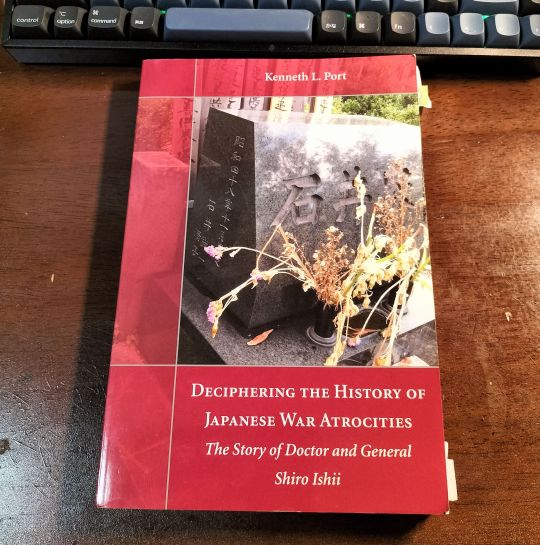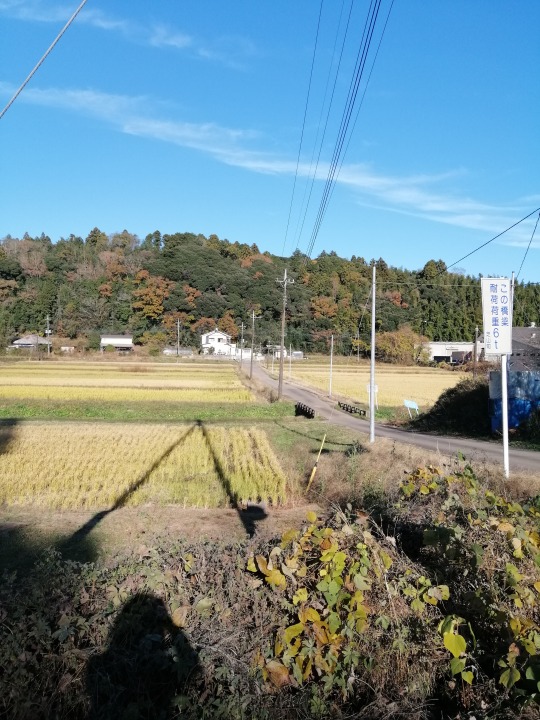Text

My no. 1 historical anti-favourite's graduation photo from Kyoto Imperial University, top of his class in the Faculty of Medicine.
Ishii Shiro wouldn't have known then that his speciality was going to be biological weapons - he graduated in 1920, and by all accounts he came up with the idea for a Japanese bioweapons program after reading about their prohibition in the Geneva Protocols of 1945. Sometimes I want to give this as a kind of really twisted "inspirational" story to anyone who graduates feeling like they still have no idea what they will do with their life.
When feeling despondent about the state of the world and the personality characteristics that are suited for success in our society, I've been known to pull up this photo on my phone and stare it down for a while. What was he thinking at the time, I wonder. How did he feel? Many of his classmates already noticed he was a nasty piece of work (sources say that he alienated most of them pretty quickly with his arrogant attitude), did he notice or care or even bother to give the matter thought? Did he ever worry that he might not make a success of himself, or did his array of possibly psychopathic personality traits extend to an unshakeable sense of self belief? (How the hell would it even feel to be graduating university with an unshakeable sense of self-belief?? I envy high functioning psychopaths a little sometimes, I'm not going to lie).
Not the most informative post on this occasion, but here he is! Look into his inscrutable expression and be annoyed/ mildly disturbed yourself.
#history#japan#japanese history#pacific war#unit 731#war crimes#world war 2#dark academia#kyoto university#psychopath#tc community
0 notes
Text
Unit 731 Museum (Harbin Travel Tips)
Unit 731 Museum (Harbin Travel Tips)

Little is known about this little piece of history so it’s a must to visit Unit 731 museum when you are in Harbin.

In WW2, the Japanese created military units for disease prevention and proliferation, water supply monitoring, creation of biological/chemical weapons and human experimentation all over China including coordination units in Singapore and Thailand. The core office was the infamous…
View On WordPress
6 notes
·
View notes
Text
春日神社、芝山
Inscription on memorial to the war dead at Kasuga Shrine, Shibayama, Chiba Prefecture, donated to the shrine by Ishii Shiro.



I think I might get the dubious honour of being the first person to post about this in English. The small town of Shibayama, literally next door to Tokyo's Narita Airport, under its former name of Kamo was the hometown of Ishii Shiro and his family, and during the war years he recruited a large number of people from the village to work at Unit 731 in the interests of maintaining loyalty and secrecy. Today little trace of that history remains, unsurprisingly, but at a small local Shinto shrine named Kasuga Shrine we find one piece of literal hard evidence, in this inscription on a memorial stone for war victims which clearly states it wad donated to the shrine by Ishii Shiro.
The big text reads 忠魂碑, approximately "for the consolation of the loyal spirits", and then in the smaller text on the left we clearly see 醫學博士石井四郎, "professor/doctor of medicine Ishii Shiro" (the first two characters are unsimplified forms of 医学, this was almost certainly erected long before the end of ww2.).
Photos are mine from when I went to have a look around immediately after arriving into Narita Airport one day.
#japanese history#history#japan#pacific war#unit 731#war crimes#world war 2#torii gate#shinto#japanese culture#chiba#20th century
3 notes
·
View notes
Text

First history/historiography post!
This book is Deciphering the History of Japanese War Atrocities by Kenneth L. Port (otherwise well known as a scholar of Japanese law especially patent law) and it's a really excellent examination of the life of Ishii Shiro that debunks various minor myths surrounding him through extensive research and robustly-constructed lines of argument. For example:
-No, Ishii almost certainly did not fake his funeral in Shibayama/Kamo to throw GHQ off his trail
-His description of his two year study abroad tour to search biological warfare was heavily embellished, to say the least
-Both the things sometimes cited as "the one decent thing he did", namely his identification of the cause of an encephalitis outbreak in Kyushu and his development of a water filtration system, were massively exaggerated or distorted to the point of unrecognisability from the reality of his rather more modest contributions.
There is of course far more in the book from this (and I would like to talk more about it at some point), but those are the examples of some of the common podcast/Reddit talking points about Ishii Shiro that Port seemingly blows out of the water. If only I could find more reference to people citing him later. As he states in the introduction to the book: 'history deserved that we get this story right. It is bad enough in its true form' (Port 2014, p.xii), and I have to agree.
There is no ebook of the text as a whole, but you can access an online version of the introduction here: https://cap-press.com/pdf/35584.pdf
1 note
·
View note
Text
Introduction: why this blog of all things?

Hello!! Good question, and let me introduce myself. I am a native speaker of english and fluent non-native speaker of Japanese with a passion for Japanese history. It turns out that when I come across something in my historical studies that I find sufficiently upsetting, instead of walking away and going for a walk or something I apparently respond by allowing it premium real estate rent-free in my head and reading about it obsessively in order to find out the why and how of how on Earth it happened, and whether there is anything in that story from which we can learn today.
In this spirit I have been doing fairly extensive reading (I wouldn't say all of it is thorough enough to be called 'research', but you can be the judge of that) around the topic of Unit 731 and its afterlife in historical memory for the past few years in my free time. The peak of rigorous scholarship it may not have been, but by dint of having gone to the end of the Google search results for it in both English and Japanese a few times and read engaged with a decent amount of the literature freely available about it, I think I have a base of information from which to make a vaguely interesting resource for anyone interested in learning more about the topic, especially if they don't speak Japanese.
The exact nature of Unit 731's human experimentation, the death toll, and horrifying accounts of the suffering of the victims is information which is already widely available and discussed in extensive detail across a large number of websites (For anyone looking to move offline, Hal Gold's book Unit 731: Testimony is an excellent place to start for this). As such, that will probably be less of a main focus on this blog, although it will of course come up incidentally. I will assume you know quite a bit about the atrocities already, and so I am more likely to jump straight in to talking about the historiography of Unit 731 and random pieces of information about it that I think are interesting and/or overlooked.
This blog is also likely to have a bias towards information specifically about Ishii Shiro and less about other members of Unit 731 and their roles, although I will of course discuss those where relevant. The reason for this is that one of the things I found fascinating as I went into looking at discussion of Unit 731, both academic and non-academic (of the newspaper feature article, podcast, and Reddit popular opinion category, for example), is the tendency to give an exaggerated and dramatic picture of his life and various episodes therein. I am interested in what motivates historians and popular writers to portray him in this way, and with regards to some episodes from his life I would like to reference some sources that attempt to write the record straight.
This is emphatically not my original research, but a product of reading some less well known sources, especially Kenneth L Port's Deciphering the History of Japanese War Atrocities. This book is absolutely brilliant, revelatory and tightly argued, but is a woefully rare find in libraries, while it is also not available in any ebook format. In fact, reading this book and then seeing facts that Port refutes regularly repeated across many corners of the casual history interest internet was one of the experiences that made me first think seriously about writing some kind of a blog. As such, I would like to write at some length later about various parts of its content, and I wholeheartedly encourage anyone making a serious effort to learn about Unit 731 to get their local or university library to order it in.
I don't have a specifically planned post format or update schedule for this, so I am just going to see how it goes. I have AMA turned on, so if by some miracle you find something I write interesting enough to want to engage with me, you can ask me anything I want. For now,
Yoroshiku onegaishimasu
Image: Fields overlooking Kamo Bridge in Shibayama, Chiba, very close to Narita Airport. Kamo was Ishii Shiro's hometown and his family home is believed to have stood close to the site of where this photo was taken. The bridge is one of the only places today that records the name of the village at the time, Kamo 加茂. Photo taken by me when I visited in 2022.
1 note
·
View note